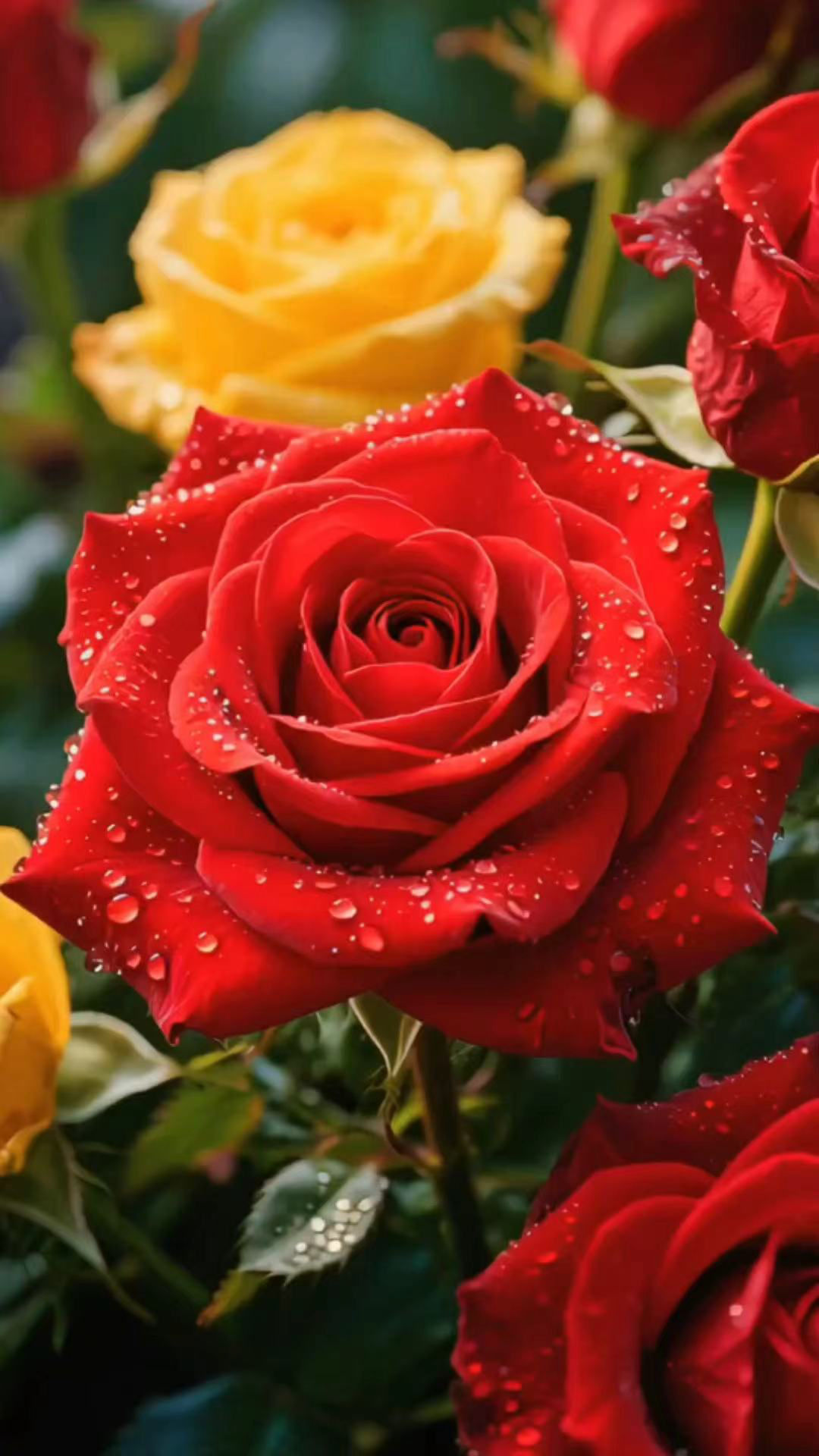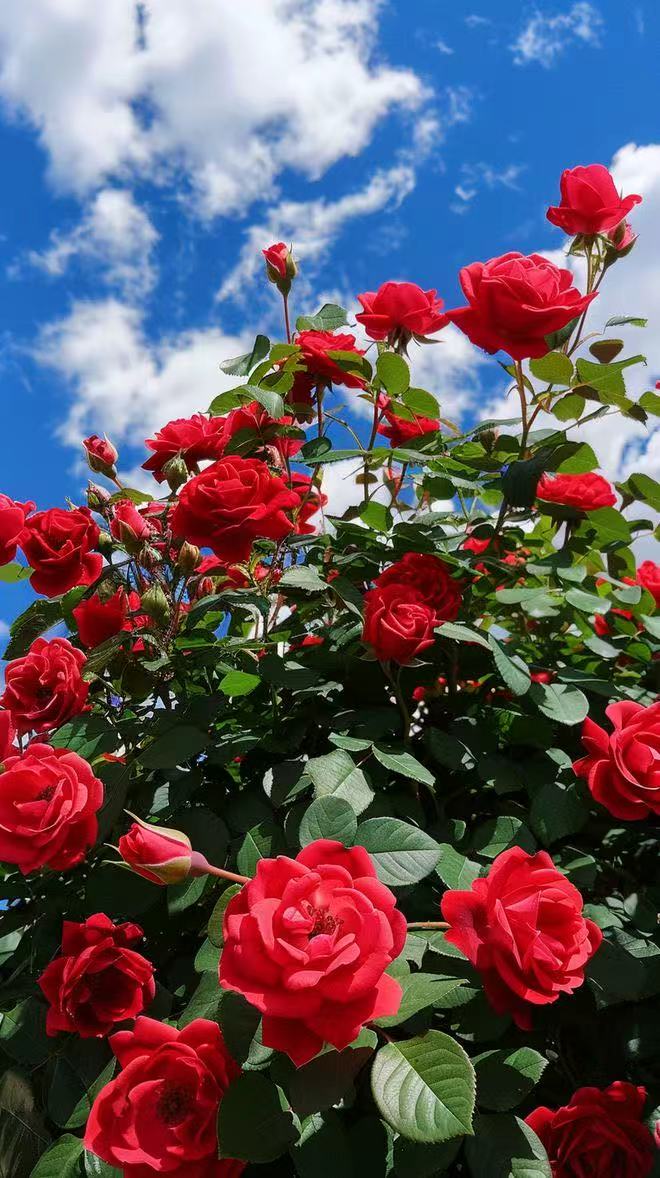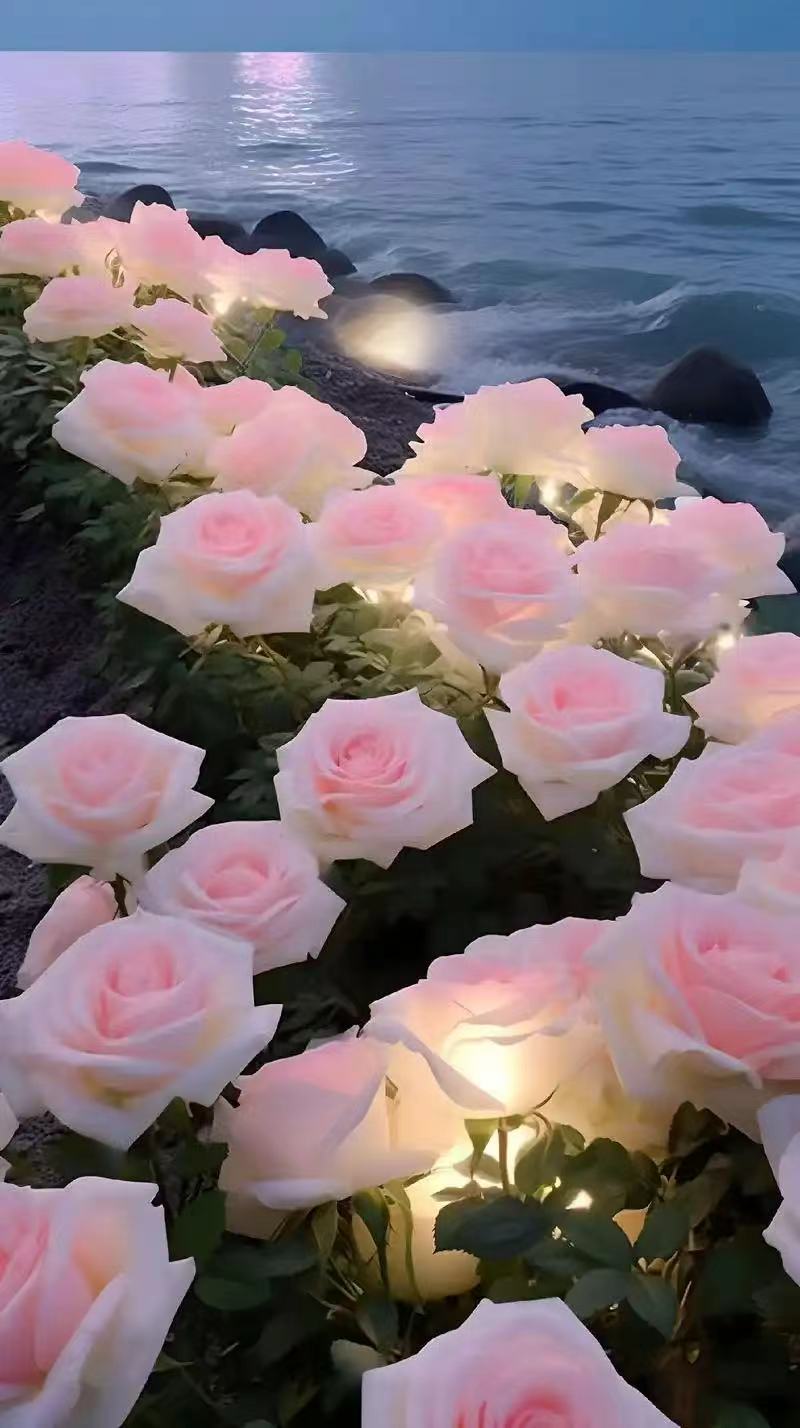Roses, belonging to the genus *Rosa* in the Rosaceae family, are one of the most iconic and beloved flowers in the world.
Botanical Characteristics:
Roses are generally shrubs, with some species being climbers or even sub - shrubs. Their stems are often armed with prickles, which are incorrectly referred to as "thorns". These prickles serve as a defense mechanism against herbivores. The leaves are alternate, pinnately compound, typically consisting of 3 - 7 leaflets. The leaflets have serrated edges, adding to the plant's distinct appearance.
The flower is the crowning glory of the rose plant. Roses come in a vast array of colors, including the classic red, symbolizing love and passion; pure white, representing innocence and purity; yellow, often associated with friendship and joy; and pink, which can signify gratitude, admiration, or grace. The flower structure itself is complex. It has sepals that protect the bud in its early stages, petals that form the beautiful and colorful outer layer, stamens that produce pollen, and a pistil, which is the female reproductive part.
Cultural Significance:
Throughout history, roses have held a special place in various cultures. In ancient Greece, roses were closely associated with Aphrodite, the goddess of love. According to Greek mythology, roses sprung up from the ground where Aphrodite's tears and Adonis' blood fell. In Roman culture, roses were used lavishly in feasts, gardens, and even as symbols of power.
In Christianity, the white rose is linked to the Virgin Mary, symbolizing her purity, while the red rose can represent the blood of Christ. In modern times, roses are an integral part of many celebrations. A dozen red roses on Valentine's Day is a classic expression of romantic love, and roses are also commonly used in weddings, funerals, and other significant events.
Cultivation and Uses:
Rose cultivation has a long history. There are thousands of cultivated varieties today, each with unique characteristics. They require well - drained soil, sufficient sunlight, and regular pruning to thrive. Roses are also popular in horticulture for their ornamental value, gracing gardens, parks, and floral arrangements.
Beyond their visual appeal, roses have practical uses. Rose oil, extracted from certain rose species, is highly valued in the perfume industry for its sweet and intoxicating fragrance. Rose petals can be used to make rose water, which is used in cooking, cosmetics, and traditional medicine for its soothing and aromatic properties.
In conclusion, the rose is not just a flower; it is a symbol that weaves through the fabric of human history, culture, and daily life, captivating us with its beauty, fragrance, and profound meaning.



